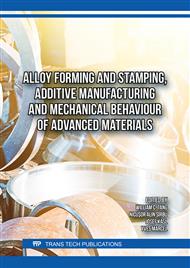p.3
p.15
p.29
p.37
p.47
p.55
p.71
p.85
Optimizing Aerospace Hot Forming: A Leap Forward with Simulation Technology
Abstract:
In the aerospace industry, hot forming processes, using materials like Ti-6Al-4V titanium, are known for their complexity and cost. Senior Aerospace Thermal Engineering (SATE) has traditionally relied on a trial-and-error approach for new product introductions (NPIs), which, while effective, has led to significant time and resource expenditures. This paper examines the transition of SATE's NPI processes to a more efficient digital approach using AutoForm Forming simulation software. By doing so, SATE has been able to accurately predict forming outcomes, optimize tooling designs, and significantly reduce both the number of physical tryouts and the overall project costs. Two case studies are presented to demonstrate the practical applications of this digitalization, highlighting how important engineering decisions were taken. The paper concludes with an assessment of the impact on SATE's operations, noting improvements in development time, feasibility assessments, and overall production efficiency.
Info:
Periodical:
Pages:
15-25
Citation:
Online since:
November 2025
Authors:
Keywords:
Price:
Сopyright:
© 2025 Trans Tech Publications Ltd. All Rights Reserved
Share:
Citation:


